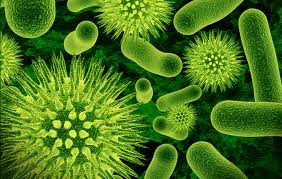Modified Bacteria Could Get Electricity From Sewage
 A fuel cell powered by naturally occurring bacteria has successfully converted 13 per cent of the energy in sewage to electricity – and cleaned the waste water at the same time. It’s hoped genetic engineering could make this much more efficient.
A fuel cell powered by naturally occurring bacteria has successfully converted 13 per cent of the energy in sewage to electricity – and cleaned the waste water at the same time. It’s hoped genetic engineering could make this much more efficient.Treating sewage and other liquid waste uses roughly 2 per cent of the US energy supply, at a cost of $25 billion a year, yet this carbon-rich material harbours nine times the energy needed to render it environmentally benign. Microbiologists believe they can drastically cut the cost and power consumption by using genetically modified bugs to treat the waste and produce electricity.
“It’s a substantial energy resource that we just end up landfilling,” says Orianna Bretschger, of the J. Craig Venter Institute in San Diego, California. “If we could recover the energy we could do waste water treatment for free.”
Bretschger described a 380-litre microbial fuel cell at a meeting of the American Chemical Society in San Diego this week. It uses naturally occurring microbes to break down organic waste and produce electrons and protons. The electrons are collected by an anode while the protons pass through a permeable membrane to a cathode. The resulting voltage between the two electrodes enables the fuel cell to produce an electric current.
The announcement represents a significant improvement over the institute’s earlier fuel cell, a 75-litre device able to harvest only 2 per cent of the waste’s potential energy. Further improvements will be needed, however, for the technology to compete with conventional waste water treatment techniques, which can rapidly process huge volumes of water.
By genetically modifying microbes to enhance their ability to consume organic waste, and better shuttling electrons to an electrode, Bretschger hopes to harvest 30 to 40 per cent of the available energy.
Genetically modified organisms aren’t currently used in either municipal or commercial waste water treatment facilities. Their potential use in a fuel cell would be regulated in the US by the Environmental Protection Agency (EPA), which has yet to determine how to govern such applications.
Conventional waste water treatment, however, already has ways of killing microbes before water gets back into the environment, including the use of chlorine, ozone and ultraviolet light. The EPA also recently granted permission for a pilot study in which genetically modified microbes were used as tracers to find leaks from sewers.
Roland Cusick, an environmental engineer at Pennsylvania State University in University Park, says genetically engineered microbes may boost efficiency, but it may be difficult to control the bug population. “Waste water has millions of microbes in it. Any time you are adding waste water, you are adding competition to your system,” Cusick says.
You can return to the main Market News page, or press the Back button on your browser.

